Classification of Tropical Storms
Tropical storms are categorized by wind speed and by the structure of the storm into the following:
- Hurricanes: These are the highest intensity storms, with the highest wind speeds,
- Other tropical cyclones,
- Subtropical cyclones and related storms.
Tropical storms have the potential to do great damage, particularly on islands and coastal continental areas.
In fact their names reflect where they form, hurricanes in the North Atlantic and Caribbean, typhoons in the Pacific, and tropical cyclones over Australia.
[Lower intensity storms have lower wind speeds and often not display the convection and circulation properties that is generally seen in hurricanes. However it is important to note that lower intensity storms can also from time to time perpetrate greater damage than storms of higher intensity, depending on where they strike and the particular hazards they bring.]
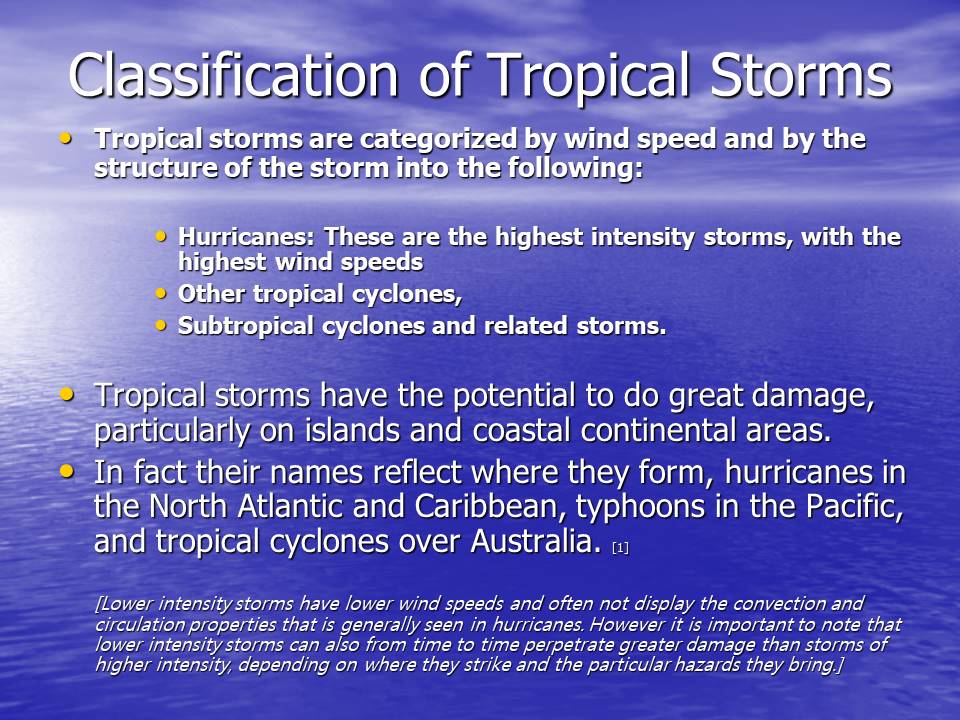
Tropical Storms in the North Atlantic
The Historical North Atlantic Hurricane Tracks:
- Major Storms are those that made landfall in the United States and that were classified on the Saffir-Simpson Hurricane Scale as Category 3, 4, or 5 at the time of landfall.
- Landfalling storms are defined as those storms whose center is either crossed or passed directly next to the United States coastline, and which are driven ashore by the wind with tropical storm intensity or greater (surface winds = 34 knots or 39 miles per hour or greater).
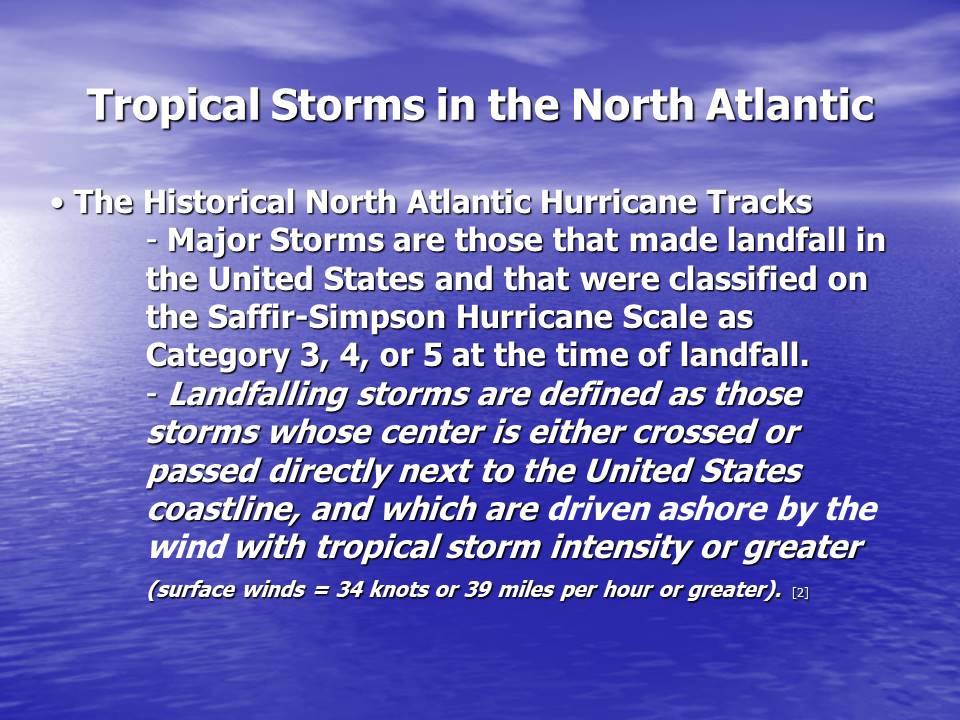
The number of named tropical storms in the North Atlantic, per year, smoothed out over a 10-year running average
Ever since 1996, tropical storm frequency has exceeded by 40% the old historic maximum of the mid-1950s, previously considered extreme.
Recent scientific studies suggest a link between higher sea surface temperature and storm frequency.
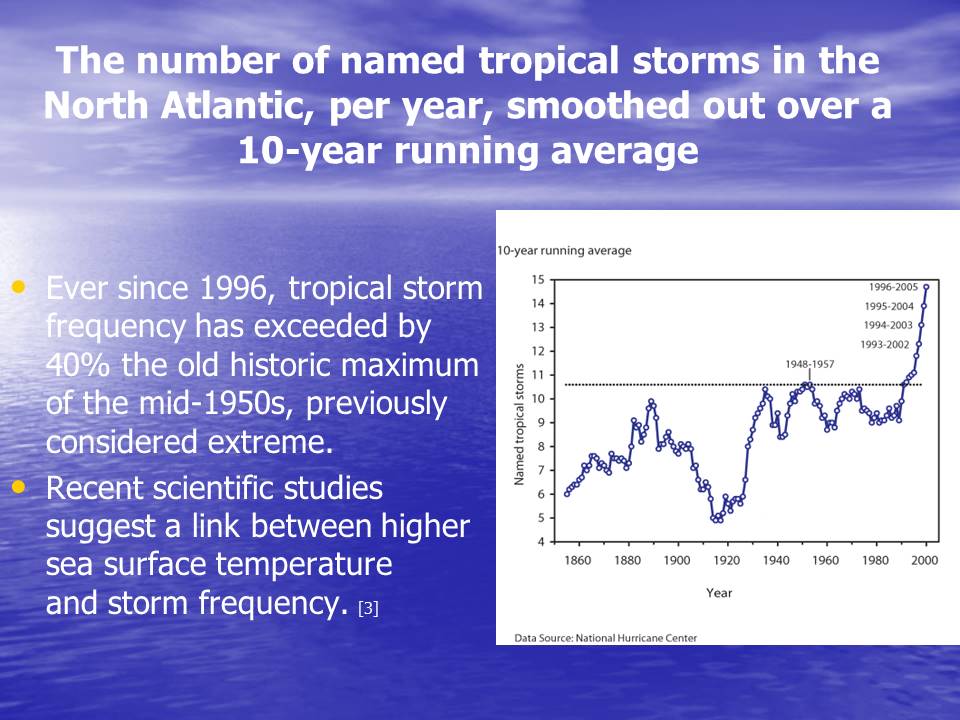
Causes & Impact
Major concern of hurricane activity:
- Frequency;
- Intensity;
- Geographical distribution.
The amount of damage increases approximately as the cube of the maximum wind speed in storms.
Scientist have suggested that upswing in tropical North Atlantic sea surface temperature is probably a response to increasing anthropogenic greenhouse gases.
The 0.5 degree centigrade warming of the tropical oceans that are observed in the past five decades is unprecedented for perhaps as long as a few thousand years. on the basis of scientific records it is believed that the recent increase is anthropogenic.
Hemisphere mean surface temperature (including land), which makes it unlikely that regional Atlantic climate phenomena are affecting tropical sea surface temperatures ( and thereby affecting hurricanes) on time scales of more than a few years.
The increasing intensity of hurricanes with time show an upswing of both the maximum wind speed in and the duration of hurricanes.
The energy released by the average hurricane seems to have increased by around 70% in the past three decades or so, corresponding to about a 15% increase in the maximum wind speed and a 60% increase in storm lifetime.
When the sea surface temperature falls, the energy consumption falls, and conversely, when it rises, so too does the energy consumption.
Scientists from the National Center for Atmospheric Research (NCAR) and Institute of Technology have said that warmer sea surface temperatures and altered wind patterns linked with global warming are responsible for increases in the number of hurricanes. On average twice as many hurricanes form in the Atlantic each year than a century ago.
The scientific consensus is that warming of ocean surface waters is likely to lead to an increase in the intensity of tropical storms, with higher peak wind speeds and heavier rainfall. This means that hurricanes will be more damaging.
Figure shows the increase in surface temperatures in the North Atlantic, which in large part range between 0.3 and 1 °C over the indicated time period. A significantly stronger warming of several degrees is seen in Arctic latitudes, primarily because of the positive (strengthening) feedback with the shrinking sea ice.
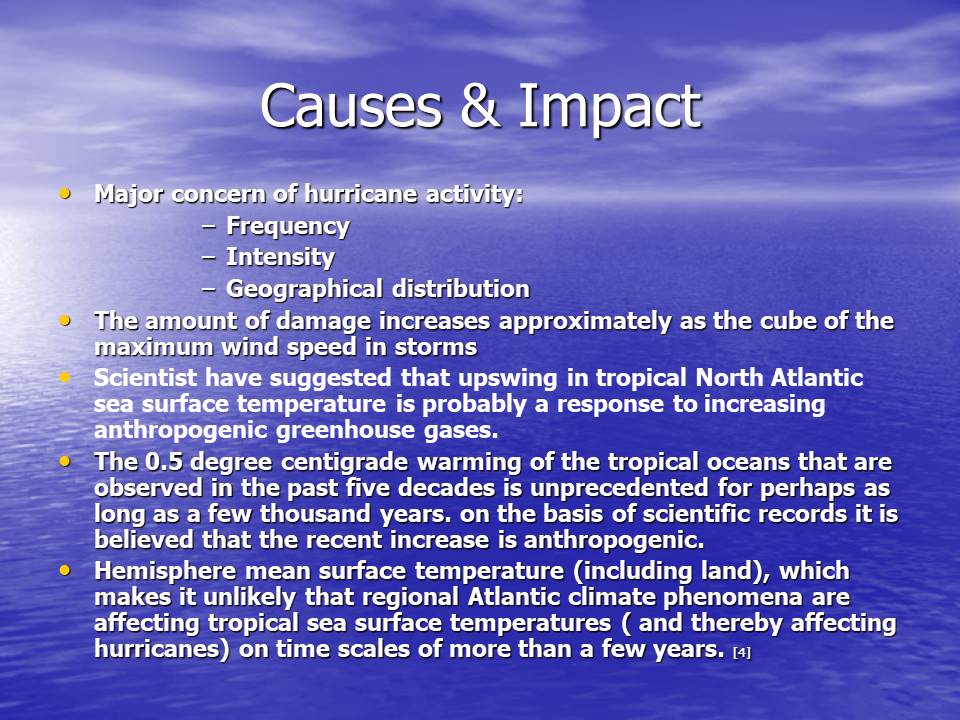
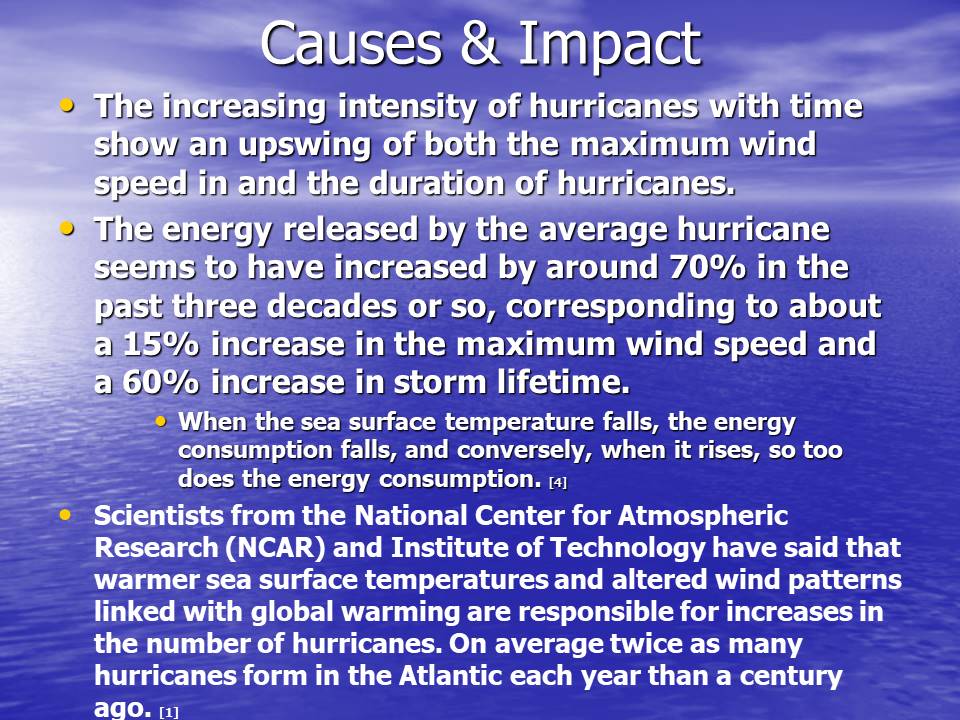
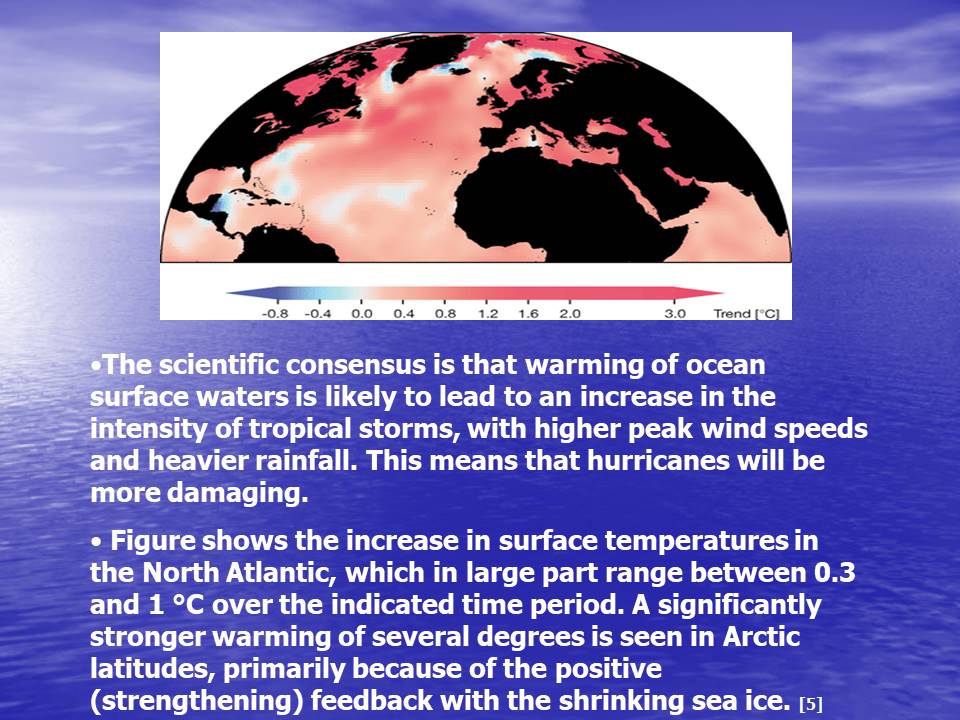
Hurricane Katrina
Tropical storms frequently hit the headlines, never more so than when Hurricane Katrina devastated New Orleans in 2005.
Hurricane killed at least 1800 people and caused an estimated $81 billion worth of damage, making Katrina the costliest natural disaster in history.
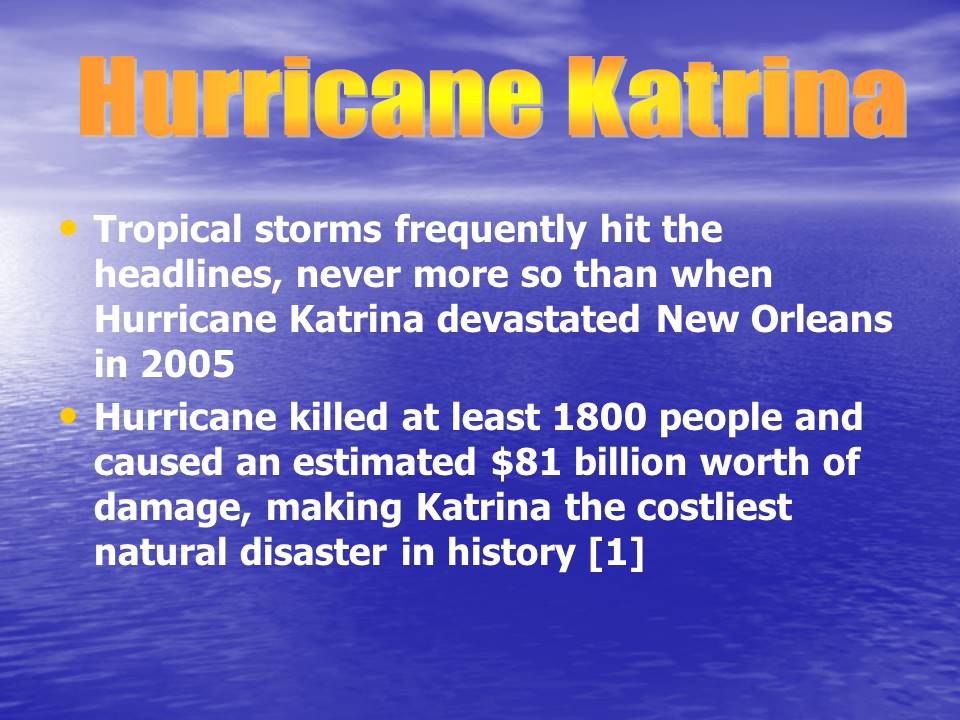
References
LTS Online Service (2007) Impact of Climate Change : hurricanes, cyclones and typhoons.
NOAA (2008) Historical Tropical Cyclone Tracks. Web.
pewclimate.org (N.D.) 3D. North Atlantic Tropical Storms.Web.
Emanuel, K. (2006) Anthropogenic Effects on Tropical Cyclone Activity.
WBGU (2006) SPECIAL REPORT 2006 – CHAPTER 2: Global warming and marine ecosystems. Web.